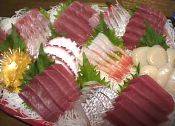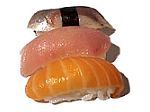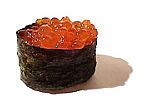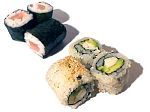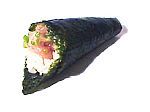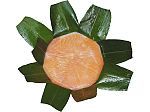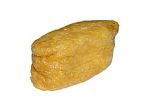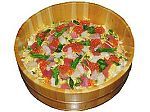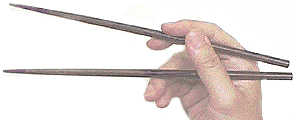
Chopsticks are used to eat most kinds of Japanese foods, with some exceptions. Some of the most important rules to remember when dining with chopsticks are as follows:
- Hold your chopsticks towards their end, not in the middle or the front third.
- When you are not using your chopsticks, or have finished eating, lay them down in front of you with the tips to left.
- Do not stick chopsticks into your food, especially not into rice. This is only done at funerals with rice that is put onto the altar.
- Do not pass food directly from your set of chopsticks to another's. Again, this is a funeral tradition that involves the bones of a cremated body.
- Do not spear food with your chopsticks.
- Do not point with your chopsticks.
- Do not wave your chopsticks around in the air or play with them.
- Do not move plates or bowls around with your chopsticks.
- To separate a piece of food in two, exert controlled pressure on the chopsticks while moving them apart from each other in order to tear the food. This takes some practice. With larger pieces of food such as tempura, it is also acceptable to pick up the entire piece with your chopsticks, and take a bite.
- If you have already eaten with your chopsticks, use the opposite end to take food from a shared plate.
Knives and forks are used for Western food only. Spoons however, may be used with certain Japanese dishes such as donburi or Japanese style curry rice. A Chinese style ceramic spoon is sometimes used to eat soups.
Sumber: http://www.japan-guide.com/e/e2039.html

